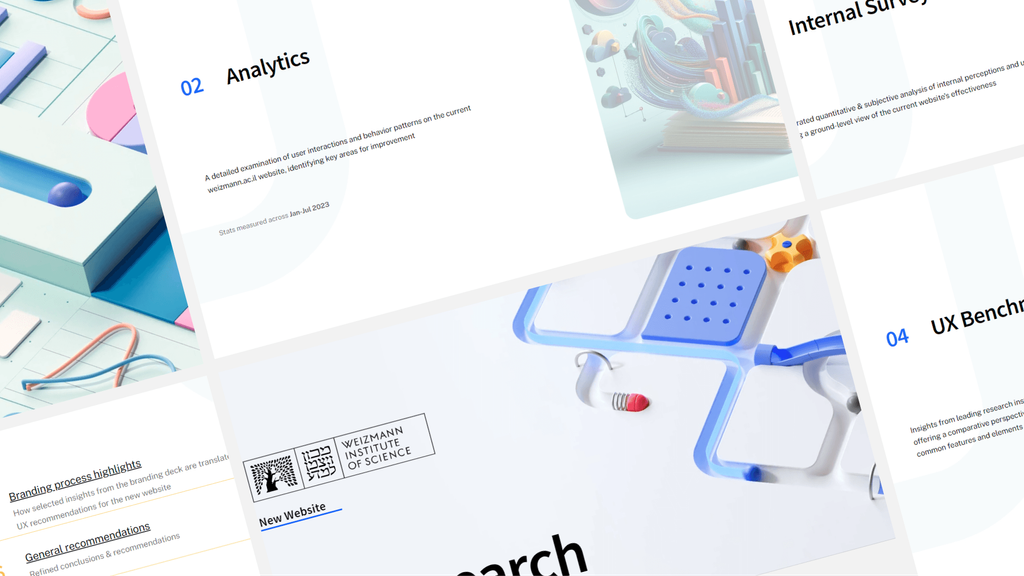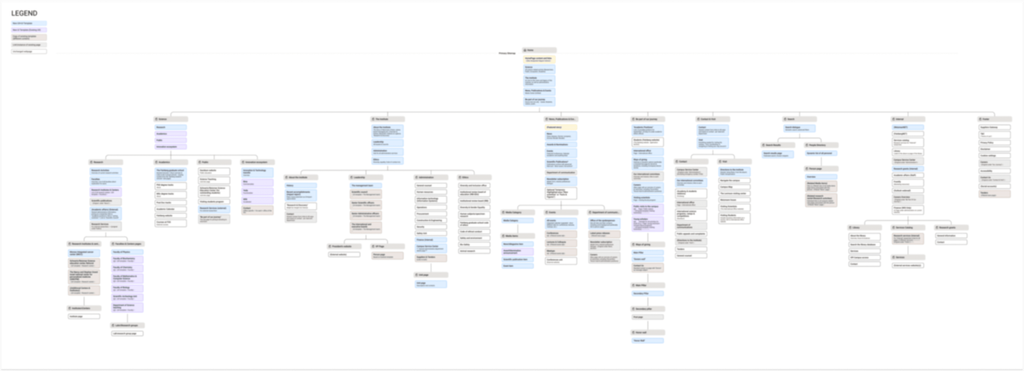The Weizmann Institute, renowned for its contributions to global scientific research, sought to redesign its website to better serve its diverse audience.
Our role was to conduct comprehensive UX research to inform this transformation, ensuring the new digital experience would be intuitive, engaging, and true to the Institute's mission.
Our Approach
To set the stage for a user-centered redesign, we adopted a thorough approach, focusing on understanding Weizmann’s key audiences—students, researchers, donors, and the public—and identifying areas for improvement. Our approach combined deep-dive analytics with stakeholder and user insights, aiming to create a website that reflects the Institute’s stature and supports each audience's unique needs.
Methodology
Our UX research methodology included:
- Current State Analysis: We evaluated site analytics and user flows to understand existing strengths and pain points, mapping the most and least effective parts of the site.
- Benchmarking: We compared Weizmann’s digital experience against other top research institutions to identify industry best practices and establish performance standards.
- Stakeholder Interviews: Key stakeholders provided insights into the priorities and pain points from within the organization, allowing us to align recommendations with internal goals.
- User Surveys and Behavior Analytics: We segmented survey feedback and behavioral data across audiences to uncover what matters most to each user group, such as ease of navigation and content relevance.

Conclusions
Our research uncovered several overarching themes impacting the effectiveness of the current digital experience. The findings pointed to opportunities to streamline user interactions, increase content accessibility, and better align the site’s structure with the diverse needs of Weizmann’s audiences. These insights underscored the importance of designing a user experience that balances intuitive navigation with compelling storytelling, enabling the site to better reflect Weizmann's identity and mission.
Recommendations
To guide the redesign process, we provided high-level recommendations aimed at creating a cohesive and user-centered platform. The suggestions focused on simplifying navigation, enhancing content visibility, and creating tailored pathways for key audience groups. With these strategic adjustments, the new website can deliver a seamless experience that engages users while highlighting Weizmann's contributions to science and education.
At Pandush we conclude our UX research with a key deliverable - The suggested new UX architecture.
